Stokes Bay Railway and Pier Company
On 6th April 1863, the railway line from Gosport to Stokes Bay Pier was officially opened to transport passengers from Gosport Station to the ferry terminal on the pier from where they could journey by steamer to the Isle of Wight. This was easier than travelling via Clarence Pier but all changed Portsmouth Harbour station was opened in 1876 and the need for the line to Stokes Bay declined.
The terminus of the line was constructed entirely on the pier, which had two wooden platforms, a waiting room and offices. The pier itself had berths for four steamers. In 1895 an inspection of the pier led to its closure for a while and a temporary platform was added to the north of the pier. In 1896 it was partially rebuilt at a cost of £6,000. The line occasionally handled goods and Mr. Leather (who built Fort Gilkicker and the Spithead Forts) ran his own branch line from the terminus to his construction yard nearby, which also had its own pier.
A more direct line opened in 1865 enabling trains to travel direct to Stokes Bay without first having to travel to Gosport Station. A new station was opened on the same date near Bury Road to allow passengers for Gosport town easier access.
Ferries to the Isle of Wight
From the pier, steamers ran to and from Ryde. The 45 ton iron steamer Gareloch ‘….a long narrow boat’, began making five passages each day, averaging about 15 minutes per trip and a capacity for 300 passengers. Briefly from 4 May to 3 June 1863 Southampton steamers also maintained a service from Stokes Bay to the Isle of Wight but made the passage to Cowes direct. In February 1863 it was announced that the Ryde Ferry Company intended to put on “three Clyde steamers of the most improved build to run the passage from Stokes Bay Railway and Pier and Ryde Pier in ten minutes”.
In May 1863 the iron hulled Chancellor, a large two funnelled steamer arrived from Clyde to maintain the Stokes Bay to Ryde service. She was also to undertake round the island cruises to Guernsey, Jersey, Poole and Le Havre. The Chancellor made her first excursion on 29 June 1863, taking holidaymakers from Stokes Bay to Ventnor. The trip across The Solent took 11 minutes. In February 1870 the press reported that it was intended to enlarge the pier to accommodate large steamers sailing to America but this was not to happen. The company sold the branch to the London and South Western Railway in 1875.
From June 1901 services to the Isle of Wight from Stokes Bay were provided by the Southampton and Cowes Steam Packet Company and the Joint Railway Company boats. From 1902 the steamers ran to the island during May to September and service was suspended from 1st October. The steamer service ended in 1913. The last train ran on the 31 October 1915 and the line closed to passengers on 1 November 1915.
Did Queen Victoria use Stokes Bay pier?
Local rumour says yes! Some books on Gosport Railways say no!
An article in the Hampshire Telegraph on Wednesday 7th February 1880 confirms that she did:
The Queen accompanied by Princess Beatrice, left Osborne on Wednesday for London. Owing to the dense fog which prevailed the ordinary route from Cowes to Clarence Yard had to be abandoned and the Stokes Bay route substituted. The Queen and suite embarked shortly eleven o’clock on board Alberta Staff-Captain Alfred Balliston, Captain Thomson of the Royal yacht Victoria and Albert being also on board. The Alberta proceeded at a very slow rate of speed piloted by the Elfin, and the steam whistle was kept continually blowing, while a steam whistle on Stokes Bay Pier was blown at frequent intervals to indicate its position. Stokes Bay was reached at 12.25 and Her Majesty was received by Admiral Alfred P. Ryder, Naval Commander-in-Chief. The Royal special train left for Victoria at 12.33 and was two hours late. The railway arrangements were carried out under the direction of the London and South-Western Company; Mr E.W. Verrinder, Traffic Superintendent, and Mr Joseph Dyson District Superintendent at Gosport. Her Majesty appeared in good health and expressed herself much pleased with the arrangements for her journey.
Also Queen Victoria’s diary for 4th February 1880 has an entry:
..it was decided we should go but very slowly crossing to Stokes Bay. No vessels were out and there could be no danger so at 11 we left the house with Beatrice and all the ladies and gentlemen embarking as usual at Trinity Pier our crossing was very disagreeable as we literally crawled across blowing the fog horn constantly, the Elfin answering by bells and unable to see anything but a few yards all around though occasionally it was a little better. We had some difficulty in finding the pier and a man called out “I am Stokes Bay Pier”. It was 1/2 past 12 when we at length landed. We stepped on to the pier and at once entered the train. There was no station only a covered shed.
So it seems that the local rumours are true. Whilst Queen Victoria did not use the Stokes Bay pier on a regular basis, she did use it on a few occasions.
WW1
During World War One the Admiralty rented the pier and they bought the line as far as Gosport Road Station in 1922. By the early 1930s Stokes Bay was used for air dropped torpedo tests and the pier was used for recovering torpedoes. The track from the pier to The Crescent was lifted in 1933. In 1935 the Admiralty agreed to the purchase of the railway line from the pier to Crescent Road at a cost to Gosport Borough Council of £1,750. In 1946 the pier was used by A.T.D.U. (Aircraft Torpedo Development Unit) manned by R.N. and R.A.F. personnel, some of whom were quartered in Fort Grange. The pier and its cranes were used for the preparation of torpedoes for test runs in the Solent.
WW2
During World War Two the pier sustained some damage from an air attack. During the D Day Operation Overlord, June 1944, the pier was the mooring point for large ‘Landing Craft Heavy’ (which could not moor at the D Day Hards in Stokes Bay because of their draught) and Motor Launches.
Final days of the pier
In 1953 the Admiralty fenced in the pier. The last use of the pier was by the Royal Naval degaussing service (A.D.G.E.) until it moved to Fort Rowner. The buildings on the pier were removed in the 1960s and the pier was demolished in stages between 1972 and 1976, but leaving the piles and putting up warning notices. It was not until 1985 that the supports were finally destroyed by the Royal Engineers diving establishment at Marchwood, who offered to remove 90 piles and two crane bases free of charge. They agreed to undertake this over a period of two years in seven to ten visits a year, using explosives. The bases of the pier supports are occasionally visible at exceptionally low tides.
Photographs
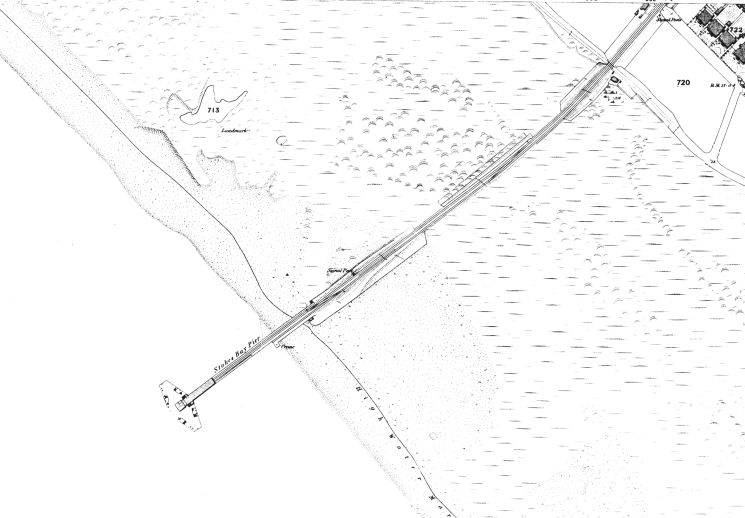
The first pier in 1873 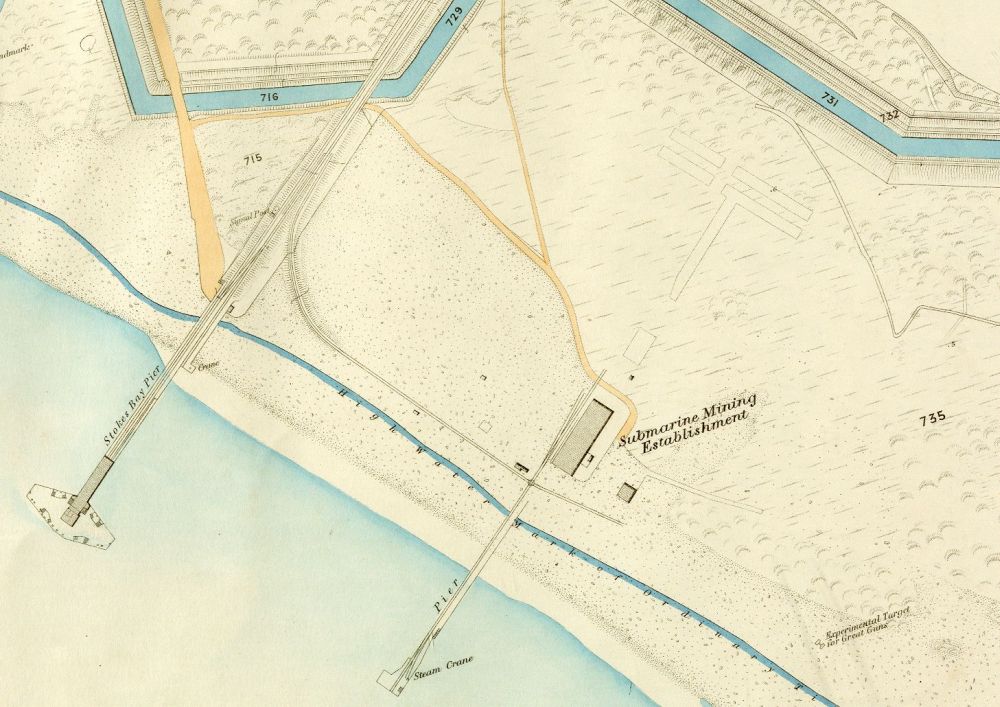
1890. The pier to the east was used by the Royal Engineers. 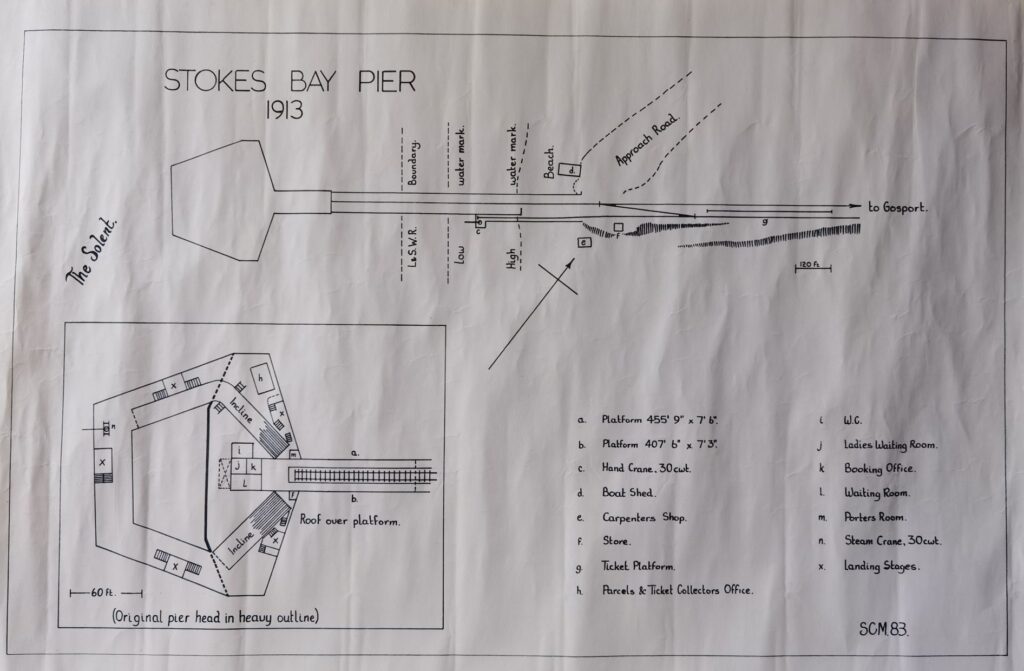
1913 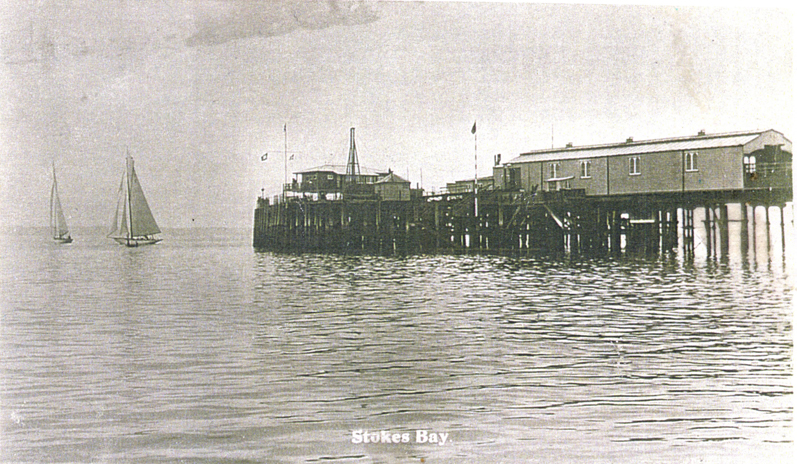
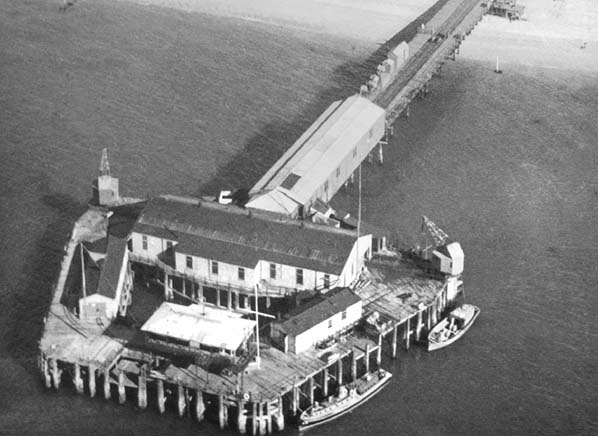
In use by the Admiralty 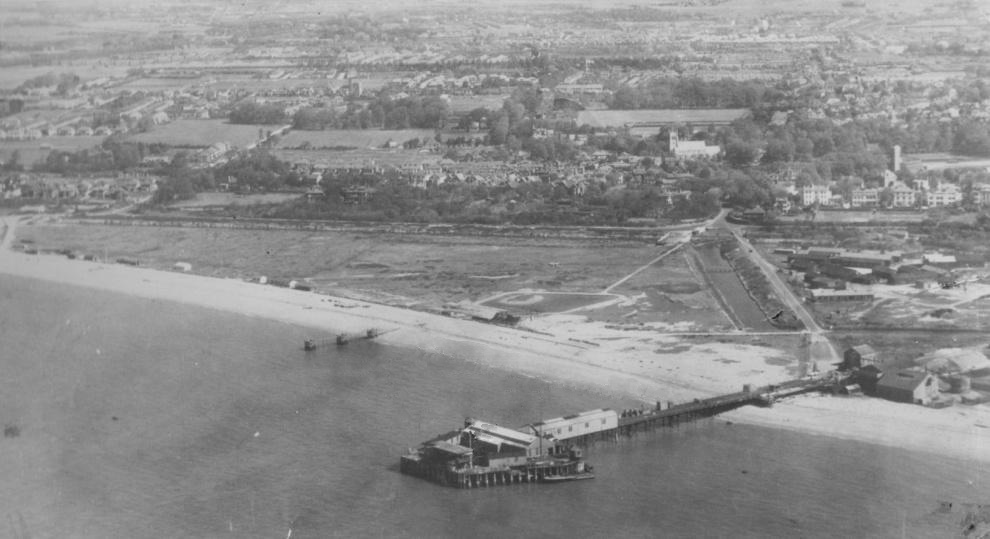
In use by the ATDU just after WW2 with mooring dolphins to the west 
Post 1930 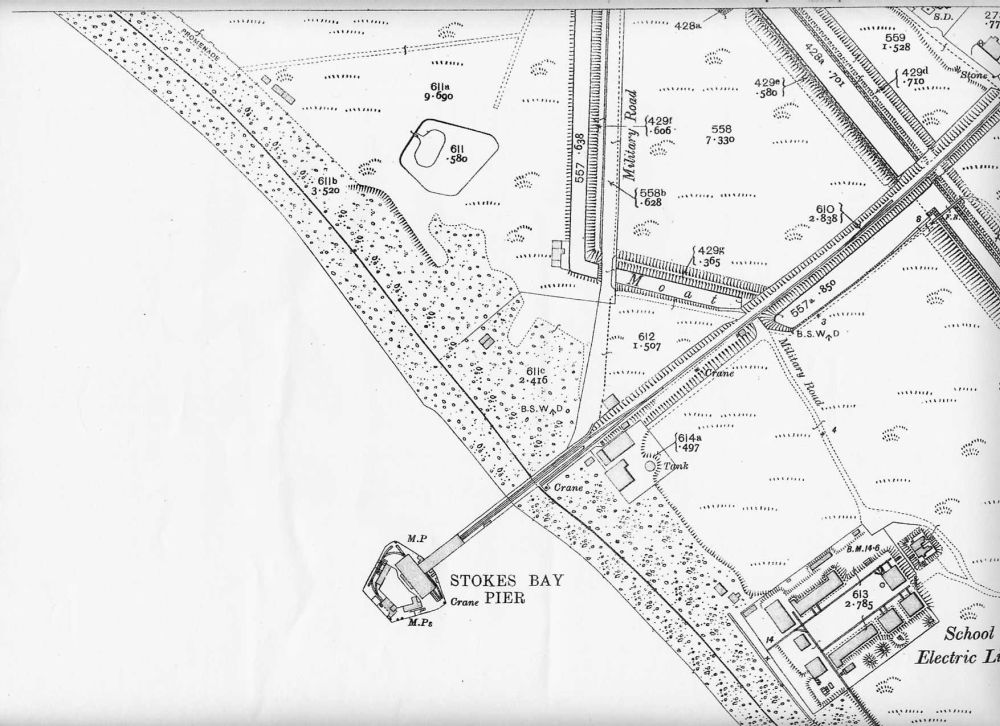
In 1931 after it was enlarged for the torpedo development unit. 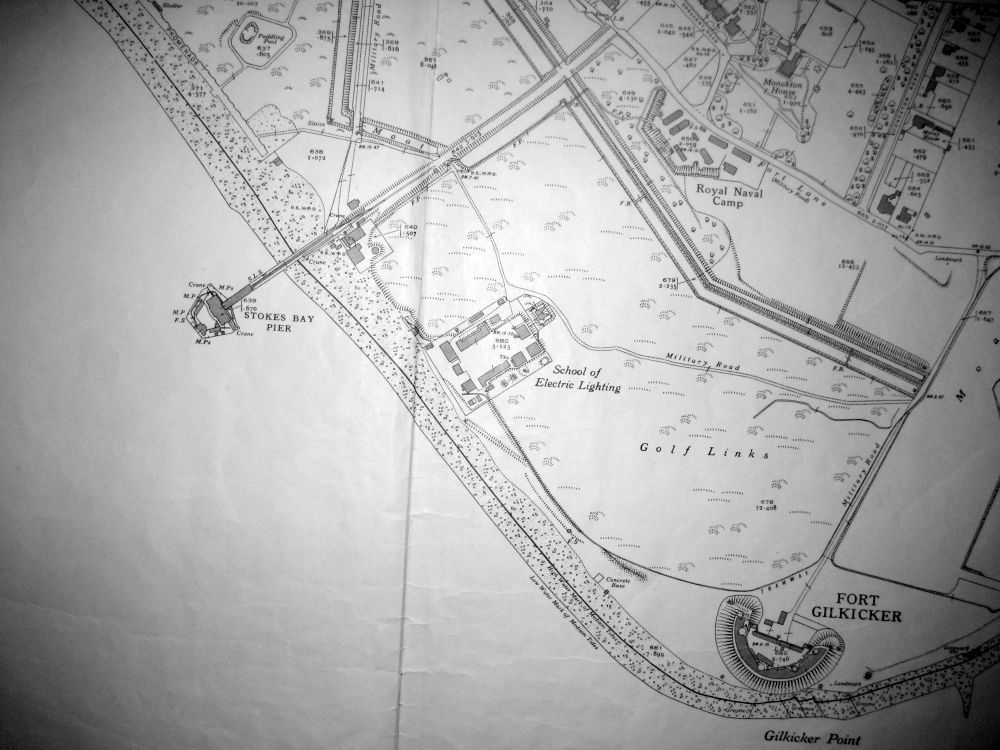
1939